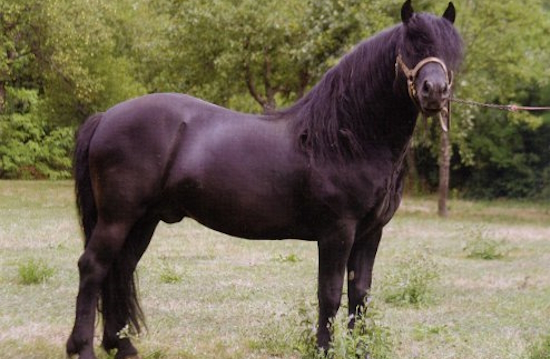Bardigiano horse
Morphologically, the Bardigiano is a meso-brachymorphic type horse, therefore halfway between the draft horse and the riding horse. Of docile constitution and temperament, it is frugal and resistant. Its head is light, with a slightly concave bridge-nose line, large, lively and expressive eyes, usually covered by a thick, falling tuft. It has a thick mane, medium raised withers, a broad croup with well-developed transverse diameters. The limbs of the Bardigiano have robust bones, short pastern, feet with very hard nails, also suitable for rough terrain. The coat is bay (from ordinary bay to badly dyed black).
The first news on the origins of the Bardigiano horse dates back to 1864, the date from which the description of a sufficiently homogeneous variety of horses that extended from the Western Apennines to the Lunigiana dates back. This horse breed takes its name from its area of origin: the town of Bardi, a town in the Parma Apennines.
Bardigiano horse breeding is consolidated in the hilly and mountainous areas of the Emilia Romagna, Liguria and part of Tuscany regions and is constantly spreading to new regions. The currently estimated population is 3,500 heads of which 1,300 mares.The most widely practiced type of farming is semi-wild; the Bardigiano horse is left free for several months of the year on the wide pastures of the Apennines. With the establishment of the stud book in 1977, the typical characteristics of the breed were defined, also based on the environment in which the horse lives and the production activities linked to it. The selection objectives include a conformation suitable for saddle duty and light shooting and for use in equestrian tourism.
Docility, the habit of working and resistance to fatigue and the difficulties of the terrain are innate qualities in the Bardigiano Horse. Its morphological conformation made up of powerful muscle masses and firm, robust joints make it a horse capable of tackling any natural obstacle, even in very narrow spaces.
